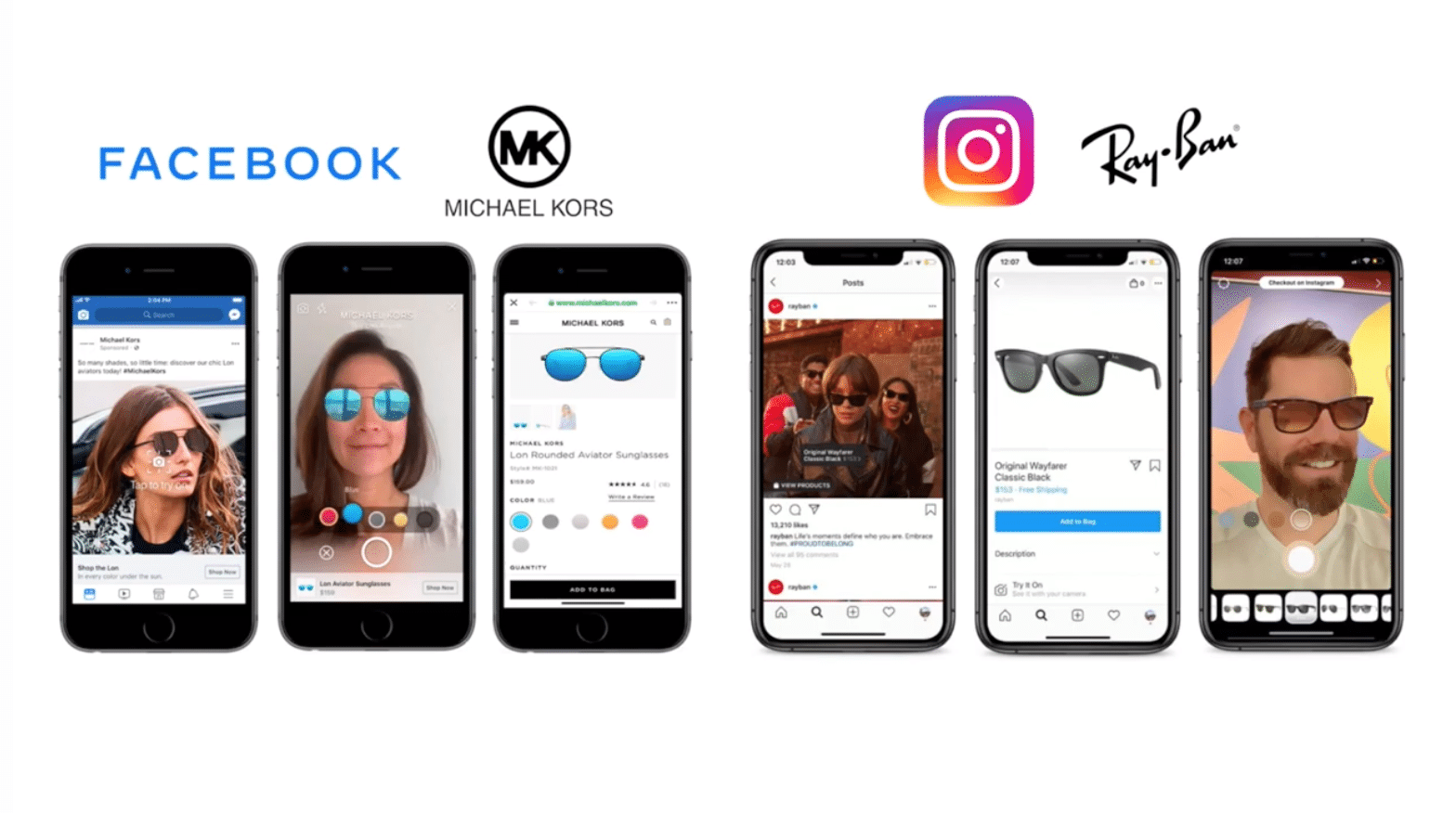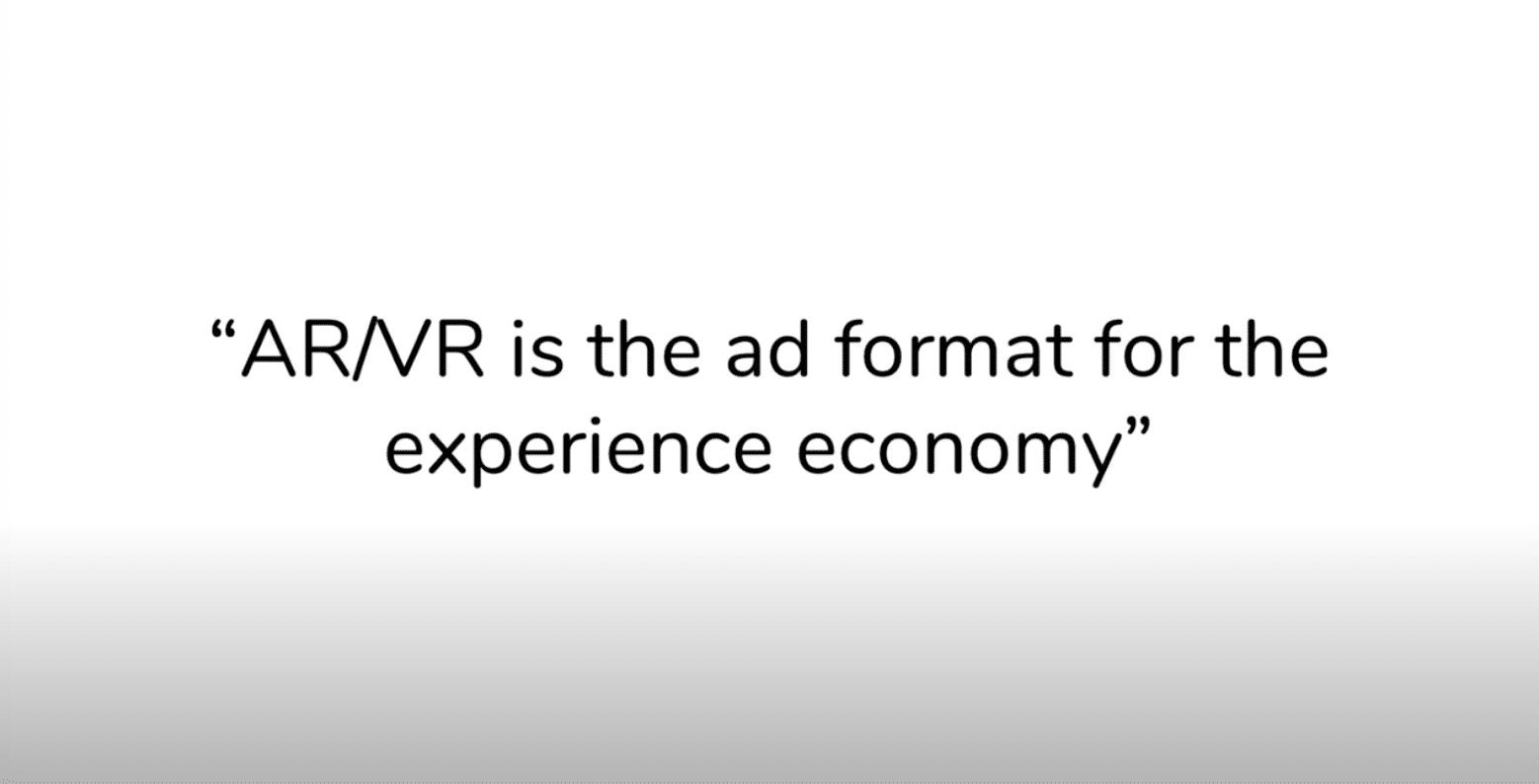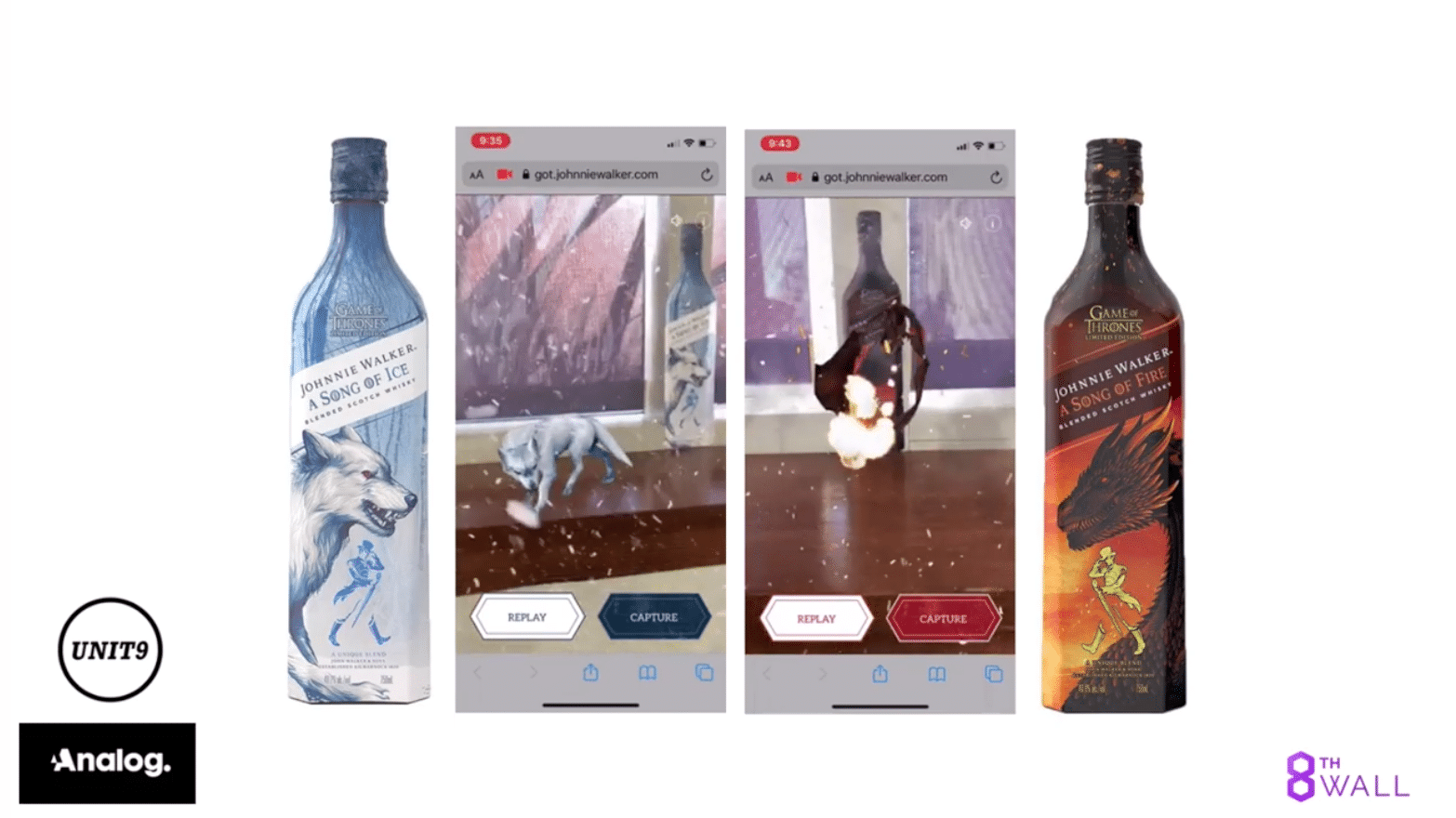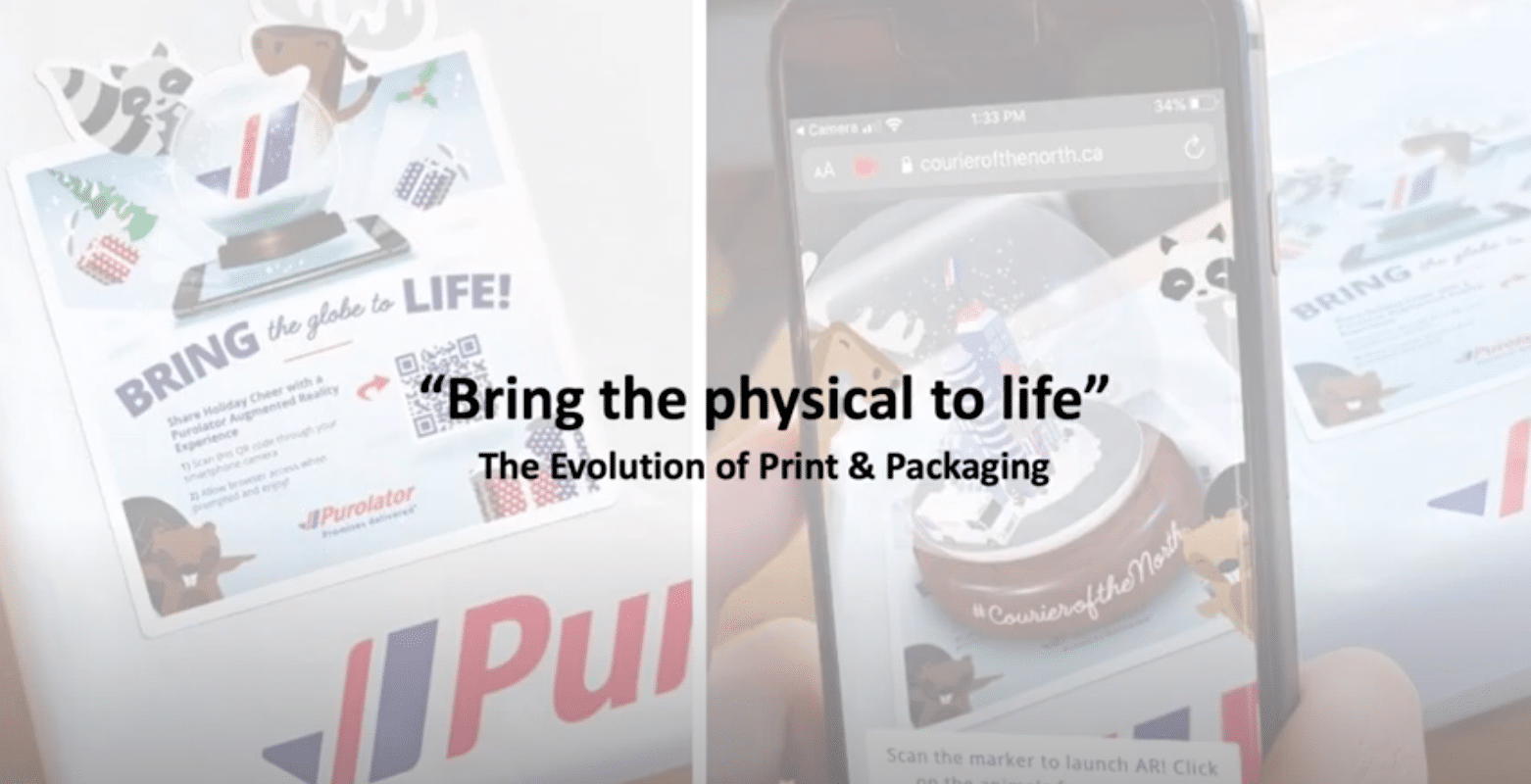
XR Talks is a series that features the best presentations and educational videos from the XR universe. It includes embedded video, as well as narrative analysis and top takeaways. Speakers’ opinions are their own.
AR comes in many flavors. That includes everything from gaming to commerce to enterprise productivity. But the most lucrative form to date has been AR advertising. Brands can demonstrate products in immersive ways, piggybacking on the popularity of social lenses.
That plus a feedback loop of effective results drove an estimated $1.56 billion in AR ad revenue last year according to our research arm ARtillery Intelligence, growing to $8.8 billion by 2023. But even within AR advertising, there are several flavors including front-facing and rear-facing lenses.
In a broader sense, there’s also AR marketing and commerce. Not included in the figures above, this includes the closely-related area of AR promotions that happen outside of paid placement. We’re talking brands’ own apps, in-store activations or other self-distributed AR experiences.
To provide some definition around this expanding universe of AR advertising and marketing, 8th Wall‘s always-insightful VP of Product Tom Emrich held a recent virtual presentation (video below). Think of it as a public service announcement or crash course on the wide world of AR advertising.

The Experience Economy
Emrich asserts that the opportunity is driven by some of the factors above, including AR’s appeal for brand advertisers to flex their creative muscles. AR affords them greater ability to show products’ true dimension (literally) versus static banner ads — a staple of the experience economy.
“Advertisers are being equipped with a new medium, which will allow them to reach, engage and connect with people in ways we haven’t been able to do with today’s offline and online formats. This is because the next wave of computing offers users something more than just reading, watching, viewing, clicking and sharing. It offers them something they can experience, and it comes at just the right time as advertisers are beginning to figure out how to succeed in the growing experience economy.”
This era of tech branches from the “attention economy” that ruled the last decade. While that was all about battling for consumer attention, the experience economy will be about deeper immersive experiences, including ads. This matters, as brand recall and other ad KPIs are greater with AR.
“AR ads give users the opportunity to interact with a product, IP, and brand elements in a way that’s just not possible with 2D digital content, including video. This moves ads from being something you read, watch, or listen to something you experience. Today’s AR ads also give you the reach needed to justify the spend, as they leverage devices that users already have access to, such as their smartphone.”

31 Flavors
That brings us to all of the flavors of AR advertising and marketing referenced above. There are several, which Emrich unpacks one by one with demonstrable examples. Variables include creation, distribution and intended user actions. We won’t recite them all, but here’s a sampling.
First, the most popular AR experiences have been selfie-centric. Front-facing camera activations caught fire on Snapchat for adding whimsy to the already-popular pastime of sharing selfies. But the opportunity broadens when the camera flips to the broader canvas of the physical world.
We’re only starting to see the possibilities in terms of fitting product categories. Alcohol has been an early adopter, including AR animations that bring to life bottles of Bailey’s, Jonnie Walker and various wine brands. The animations can carry on-brand campaign fodder or product info.
Entertainment is also fitting. In an AR campaign that 8th Wall did for Pink Floyd’s The Later Years Album, it achieved tens of thousands of users across 140 countries in its first week alone. It also achieved a two-minute+ average engagement time — an emerging hallmark of AR.
Clicks on Bricks
Another important flavor of AR treats the real world as the content. Making the real world clickable can extend the marketing opportunity to location-relevant experiences like storefronts and landmarks. It can also disrupt and eliven out-of-home advertising, a $40.6 billion ad market.
But the same principle applies to other physical objects beyond buildings and billboards. AR can make product packages clickable. For brands, this extends the physical boundaries of their packaging with animated promotions or product info — sort of like the liquor examples.
Just like we recently examined, this lets consumer packaged goods (CPGs) gain digital real estate on the packaging they already own, which makes it a cost-efficient AR channel. It also counteracts a classic challenge they face: inability to get online-like analytics and engagement metrics.
“In 2019 an estimated $69 billion was spent on print ads. And where my friend Ori [Inbar] believes that AR ushers in ‘clicks-on-bricks,’ it also introduced ‘clicks-on-prints,’ turning mailers, cereal boxes and magazine ads into meaningful interactive experiences that can be measured similar to digital advertising […] In addition, print and packaging are a great canvas to feature a QR code, which users can scan to immediately access a web AR experience.”

Scale of Influence
Another promising direction for AR marketing is what Emrich calls incarnations. This stems from ever-popular selfie lenses by allowing consumers to wear (or be) a given product through branded accouterments. In this case, brands can empower anyone as an ambassador or influencer.
Puma’s “Pumans” campaign did this by letting users pose with a Puma mask and share with friends. Its viral appeal jumpstarted a network effect with exponential growth as people acted as micro-influencers among their social graphs. AR has a unique ability to amplify that sharability.
“They inspired their followers to use the filter themselves by sharing the link when they showed off the filter in their stories. This in turn created a population of Pumas who would then market the filter to their followers and so on. The scale of influence where the use of filters creates other users of the filter is something unique to AR because the asset that your influencer is marketing is a digital one that can be shared and used throughout the network, rather than a physical product that’s captured and shared on one influencer’s feed, relying on likes and comments.”
See the full video below including other examples and Emrich’s color commentary. He covers several others like in-store retail activations, in-aisle analytics and even VR. Meanwhile, the practical takeaway is to have clear goals and to carefully pick the flavor of AR that meets them.
